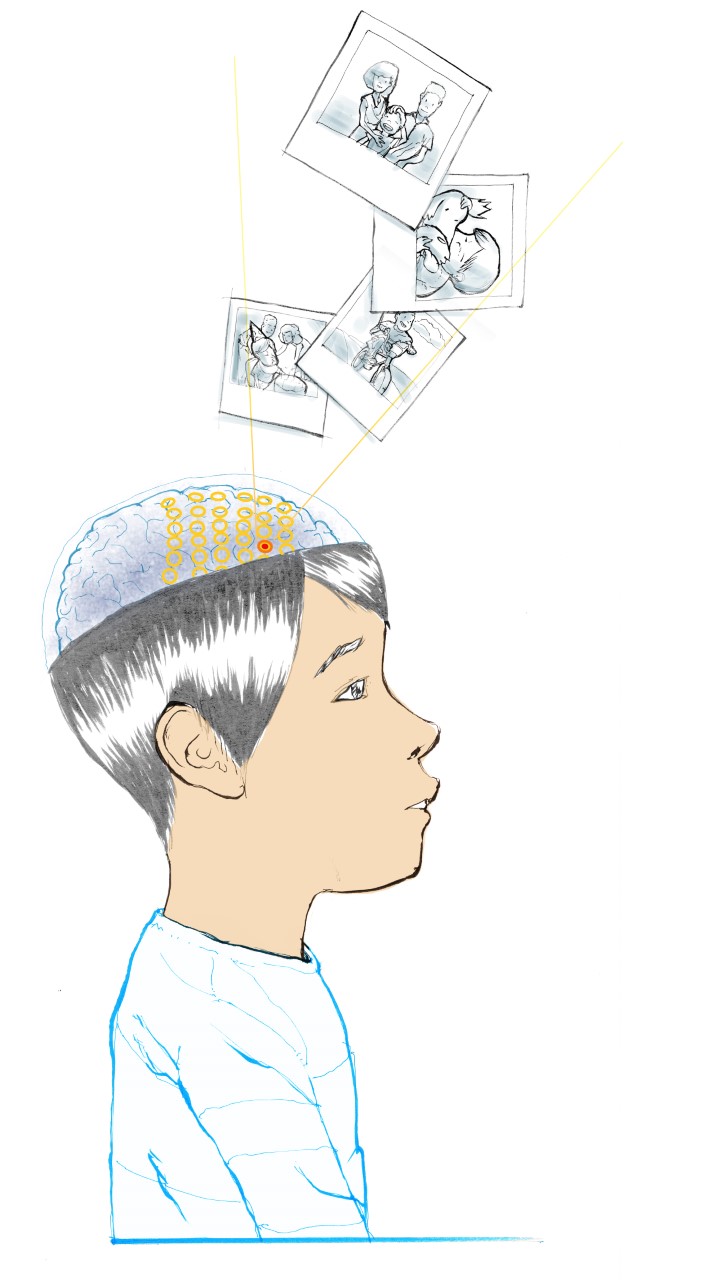New memory study first to use intracranial recordings

 DETROIT - Declarative memory — memories that can be consciously recalled — is critical to everyday life. Throughout childhood and adolescence, declarative memory improves remarkably. However, until most recently, there was a critical gap in our understanding of how maturation of the prefrontal cortex drives memory development.
DETROIT - Declarative memory — memories that can be consciously recalled — is critical to everyday life. Throughout childhood and adolescence, declarative memory improves remarkably. However, until most recently, there was a critical gap in our understanding of how maturation of the prefrontal cortex drives memory development.
A team of researchers led by Noa Ofen, Ph.D., associate professor of psychology in Wayne State University's College of Liberal Arts and Sciences and Institute of Gerontology, and Lisa Johnson, Ph.D., postdoctoral fellow at Wayne State University and at the Helen Wills Neuroscience Institute, University of California-Berkeley, are addressing this critical gap through the use of electrocorticographic (ECoG) data recorded directly from the prefrontal cortex in a cohort of 17 children and adolescents. These ECoG recordings were obtained from patients with surgically implanted subdural electrodes used for the clinical management of seizures.
"In our study, we used an established task employed in numerous studies aimed at investigating memory development in this age group," said Ofen. "It provided our team with rare insight previously not obtainable."
The team followed a two-tier, unbiased approach to ECoG data analysis by which data were first analyzed per trial on the individual level using non-parametric statistics, and then modeled on the group level.
"The high spatiotemporal precision of these recordings allowed us to provide a unique demonstration of how the developing prefrontal cortex drives the formation of memories of events in our own lives," said Johnson. "Our research shows that earlier activity predicts greater memory accuracy, and sub-second deviations in activity flow between frontal subregions predict memory formation."
This study is the first to demonstrate that the spatiotemporal propagation of frontal activity supports memory formation in children as young as 6 years of age, and show how adjacent frontal subregions follow dissociable developmental trajectories.
Additional co-authors on the paper include Lingfei Tang and Qin Yin, graduates students in the Department of Psychology at Wayne State University, and Eishi Asano, M.D., professor of pediatrics and neurology, Wayne State University School of Medicine and Children's Hospital of Michigan. Dr. Ofen is also affiliated with the Merrill Palmer Skillman Institute for Child & Family Development at Wayne State University.
The full article, "Direct brain recordings reveal prefrontal cortex dynamics of memory development," is available online in the Dec. 19, 2018 issue of Science Advances, advances.sciencemag.org/.
Support for this study was received from the National Institute of Mental Health of the National Institutes of Health (MH107512), the National Institute of Neurological Disorders and Stroke of the National Institutes of Health (NS64033) and the Benoziyo Endowment Fund for the Advancement of Science.
Artwork by Julian Wong.
###
Wayne State University is one of the nation's pre-eminent public research universities in an urban setting. Through its multidisciplinary approach to research and education, and its ongoing collaboration with government, industry and other institutions, the university seeks to enhance economic growth and improve the quality of life in the city of Detroit, state of Michigan and throughout the world. For more information about research at Wayne State University, visit http://www.research.wayne.edu.
Contact info
Julie O'Connor
Director, Research Communications
Phone: 313-577-8845
Email: julie.oconnor@wayne.edu